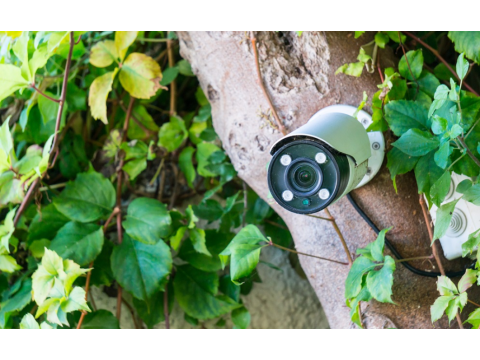Comprehensive Guide to Outdoor Surveillance Camera Installation
Outdoor surveillance systems play a critical role in safeguarding residential and commercial properties. Proper installation not only ensures robust protection against unauthorized access but also extends the life of the equipment by shielding it from environmental challenges.
Key Considerations for Outdoor Surveillance Installation
1. Choosing the Right Equipment
Weather Resistance:
- Cameras must be weatherproof, with a protection rating of at least IP66 to withstand rain, snow, and dust.
Temperature Tolerance:
- For colder climates, select models that can operate in temperatures as low as -40°F, and in warmer regions, up to +140°F.
Infrared Night Vision:
- For 24/7 monitoring, cameras should include infrared (IR) LEDs for clear nighttime imaging.
Vandal Resistance:
- Opt for anti-vandal cameras with durable housings to prevent tampering.
Protective Housing for Outdoor Cameras
To extend the life of your surveillance system, consider using protective housings or hermetic (thermo) boxes.
Features to Look for:
Material:
- Choose aluminum housings, at least 3-5 mm thick, for durability and resistance to deformation.
Shape:
- Cylindrical housings are optimal, as they minimize water and snow accumulation and offer higher structural integrity.
Kozirek (Sunshade):
- An adjustable sunshade shields the lens from direct sunlight and precipitation.
Mounting Bracket:
- Ensure the bracket provides sufficient adjustability and can withstand dynamic loads, such as wind pressure.
Installation Guidelines for Outdoor Cameras
1. Proper Placement:
Height:
- Mount cameras at a height of 8-10 feet to deter tampering while maintaining a clear field of view.
Angle:
- Position the cameras to avoid glare from direct sunlight. A downward tilt helps reduce lens flare and improves visibility.
2. Secure Connections:
- Use hermetically sealed junction boxes for cable connections to protect against moisture and dust.
- Employ shielded cables to minimize electromagnetic interference, especially when installing cameras near power lines.
3. Avoid On-Site Assembly in Poor Conditions:
- Assemble cameras and housings indoors to prevent moisture accumulation, which can lead to internal fogging or corrosion.
4. Power Supply Considerations:
- For installations far from a central power source, use outdoor-rated power supplies enclosed in weatherproof boxes.
- Utilize uninterruptible power supplies (UPS) to ensure continuous operation during outages.
Connecting the System
1. Signal Transmission:
- Use twisted pair cables for analog systems or Ethernet cables (CAT5e or CAT6) for IP systems.
- For long distances, consider signal amplifiers or power-over-Ethernet (PoE) injectors.
2. Enhanced Connectivity:
- Install hermetic connectors on camera housings for quick and secure connections, simplifying maintenance and reducing wear on internal components.
3. Grounding:
- Grounding all metal components reduces the risk of damage from electrical surges, especially in storm-prone areas.
Best Practices for Outdoor Surveillance
Lighting Considerations:
- Ensure even lighting across the monitored area to avoid shadows and blind spots. Add external light sources if necessary.
Avoid Direct Sunlight:
- Position cameras to avoid prolonged exposure to direct sunlight, which can degrade the lens or sensor over time.
Vibration Control:
- Use stable mounts to minimize vibrations caused by wind or other external forces, ensuring clear and consistent footage.
Maintenance and Testing
- Regular Cleaning:
- Remove dirt and debris from the lens and housing to maintain image clarity.
- Check Seals:
- Inspect seals on junction boxes and housings periodically to ensure watertight protection.
- Software Updates:
- Keep firmware and security settings up to date for optimal performance and protection.
Conclusion
Outdoor surveillance systems are essential for securing properties and deterring criminal activity. By carefully selecting weather-resistant equipment and following proper installation techniques, you can ensure a long-lasting and effective monitoring solution. Regular maintenance and testing will further enhance the reliability of your system.

